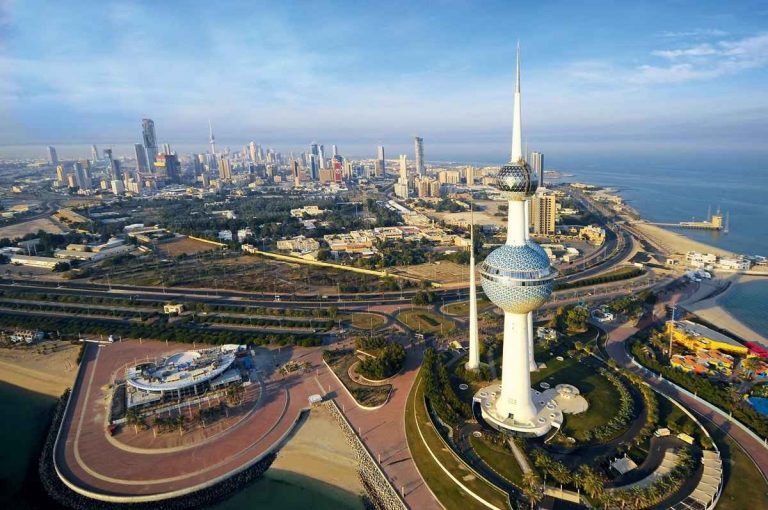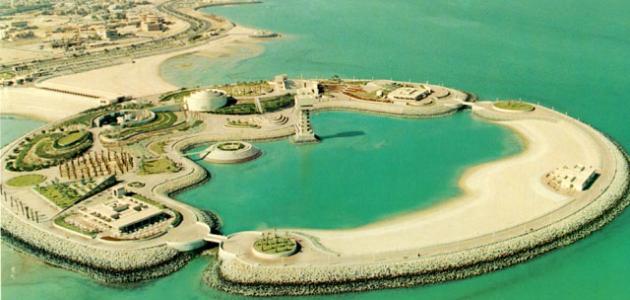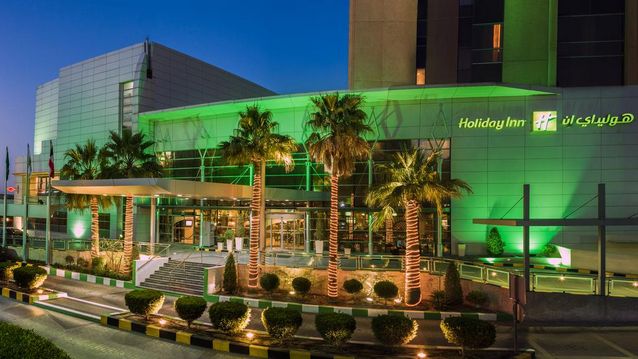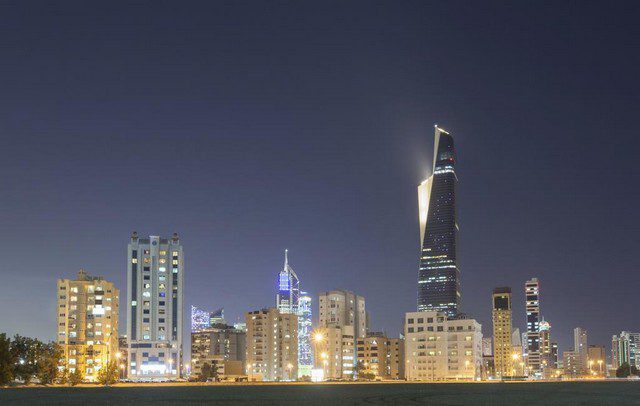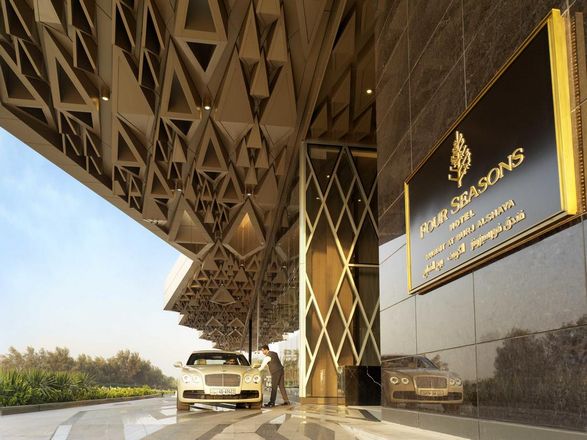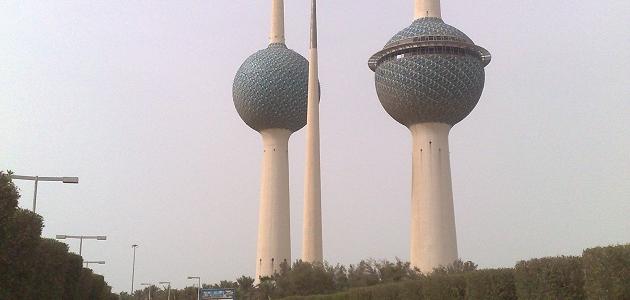Table of Contents
Kuwait
Kuwait (officially: the State of Kuwait) is an Arab country located in the Middle East, within the northwestern part of the Arabian Gulf, between latitudes 28,30 and 30,06 from the north, and longitudes 46,30 and 48,30 from the eastern side And it shares political and geographical borders with each of Iraq in the north and northwestern sides, and from the south and southwestern sides with Saudi Arabia, as well as bordered by the Arab Gulf to the east.
Kuwait City is the capital of Kuwait
The city of Kuwait is the official capital of the State of Kuwait, and it is located on the Gulf of Kuwait sea. The city was founded in the eighteenth century AD by immigrants from the interior regions of the Arabian Peninsula, and its inhabitants relied on many means to obtain resources, the most important of which are pearl extraction, fishing, And trade with Indian countries and the eastern region of the continent of Africa.
Kuwait City contains the seat of government, the Kuwaiti government, and the main banks, and also includes a group of administrative regions, the most important of which are Salhiya, Mansourieh, Abdullah Al-Salem, Shamiya, Al-Qadisiyah, Shuwaikh, Yarmouk, Bneid Al-Qar, and Al-Nahda.
After the Second World War, oil production developed in Kuwait, which contributed to the prosperity of the capital and the surrounding neighborhoods, and this led to the city becoming a financial, commercial, and administrative center, and it now contains many offices, buildings, hotels, and gardens, and then a university was established in it. In the year 1966 AD, and in the time period between 1990 and 1991 AD, the city of Kuwait suffered devastation due to the outbreak of the second Gulf War, but its inhabitants were able to rebuild it and develop its civilized areas.
Geographical nature
Kuwait has a simple geographical nature, as it extends within its lands a desert that gradually rises in elevation from the eastern side at the shore of the Arabian Gulf, up to the western and southwestern sides, and reaches a height equal to 300 m, and also a group of hills spread, including the edge of the Al-Zour Mountains overlooking the northern coast of John Kuwait, and there are a group of valleys and depressions known in the spoken dialect in the name of experiences, including: the experience of Umm Al-Aish, and the experience of Al-Rawdatain in the northern region. As for the most famous valleys of Kuwait, it is Wadi Al-Batin, which extends with the Kuwaiti western borders. The Kuwaiti geographic lands include a group of islands, numbering to nine: Boubyan Island, Failaka Island, Warba Island, Masakan Island, Umm Al Radim Island, Awha Island, Umm Al Naml Island, Qarwa Island, and Kubar Island.
the climate
The continental climate is the dominant one in the State of Kuwait, due to its geographical occurrence within the desert region, and the summer season is hot and dry, while the winter season is short and rainy, and also Kuwait witnesses a movement of wind accompanied by dust during the summer months, with an increase in the rate of air humidity and the temperature reaches Estimated in the shade to 50 degrees Celsius, and sometimes dust storms blowing dust, while in the winter a warm atmosphere prevails, where temperatures reach 18 degrees Celsius, and sometimes it may drop to the equivalent of zero degrees Celsius, and the rains in winter are considered irregular and differentiated between The years T, as spring and autumn are short seasons.
Population
The estimated number of residents of Kuwait City in 2015 reached 2,779,000 people, according to the United Nations, based on population estimates in 2016 for the Central Administration for Statistics. The population of Kuwait reached 4,132,415 people.
In 2005, the United Nations estimated the population of Kuwait, and results showed that 96% of the population density lives in cities, which are experiencing growth of 2.67%. The discovery of oil in Kuwait contributed to supporting the standard of living, which led to the migration of many people to it in order to find work. In 1994, the percentage of immigrant residents reached 56.4%, and Kuwaiti society contains various ethnic groups, most of whom belong to the Najd tribes. Coming from the middle of the Arabian Peninsula, with the presence of groups of the population belonging to Iraqi origins, while the non-Arab population are of Iranian, Indian, Filipino and Pakistani origins.
The Arabic language is the official language in the country, and spoken Arabic is used according to the Kuwaiti accent, which is close to the classical Arabic language, and English is also a general language used in teaching as a second language in schools and in various business sectors. Islam is the official religion in Kuwait, and according to estimates in the year 2004 AD, the Muslim population constitutes 64% of the population density, while the remaining percentages include many other religions such as Christianity, Buddhism, Hinduism, and Baha’i.
Economy
The traditional economic exports in Kuwait were based on pearls, but in 1946, after the discovery of oil, it became the main source and producer of the economy sector with the particiAl Bahahn of many other sectors such as fishing and agriculture.
In terms of oil reserves, Kuwait ranks third in the world after both Iraq and Saudi Arabia. Oil profits have contributed to improving living conditions and supporting the education sector. The oil-dependent industry represents 95% of Kuwaiti export earnings, and most of the oil fields have been exposed to many Of the damages during the second Gulf war, but they were repaired, which contributed to the continued production of oil and natural gas.
The Kuwaiti government launched an economic program that aims to encourage foreign investment and support diversification in local industries, the most important of which is shipbuilding, food production, fertilizer production and clothing. Kuwait also has trade relations with Germany, Japan, Taiwan, the United States of America, and Korea Southern.
Tourist places
There are many tourist places in the State of Kuwait, the most famous of them are:
- Musical fountain: It is a tourist park with the equivalent of 220 fountains, and it is ranked fourth in the world in terms of its huge size.
- Messilah Beach: It is one of the largest Kuwaiti water beaches, and its coastline reaches a distance of about 350 meters, and it is distinguished by its diversity of sand between white and different colors.
- the National Museum: It is one of the tourist places in Kuwait, and it contains many holdings, including ancient fossils, pottery tools, and other products related to Islamic history and Kuwaiti heritage.

